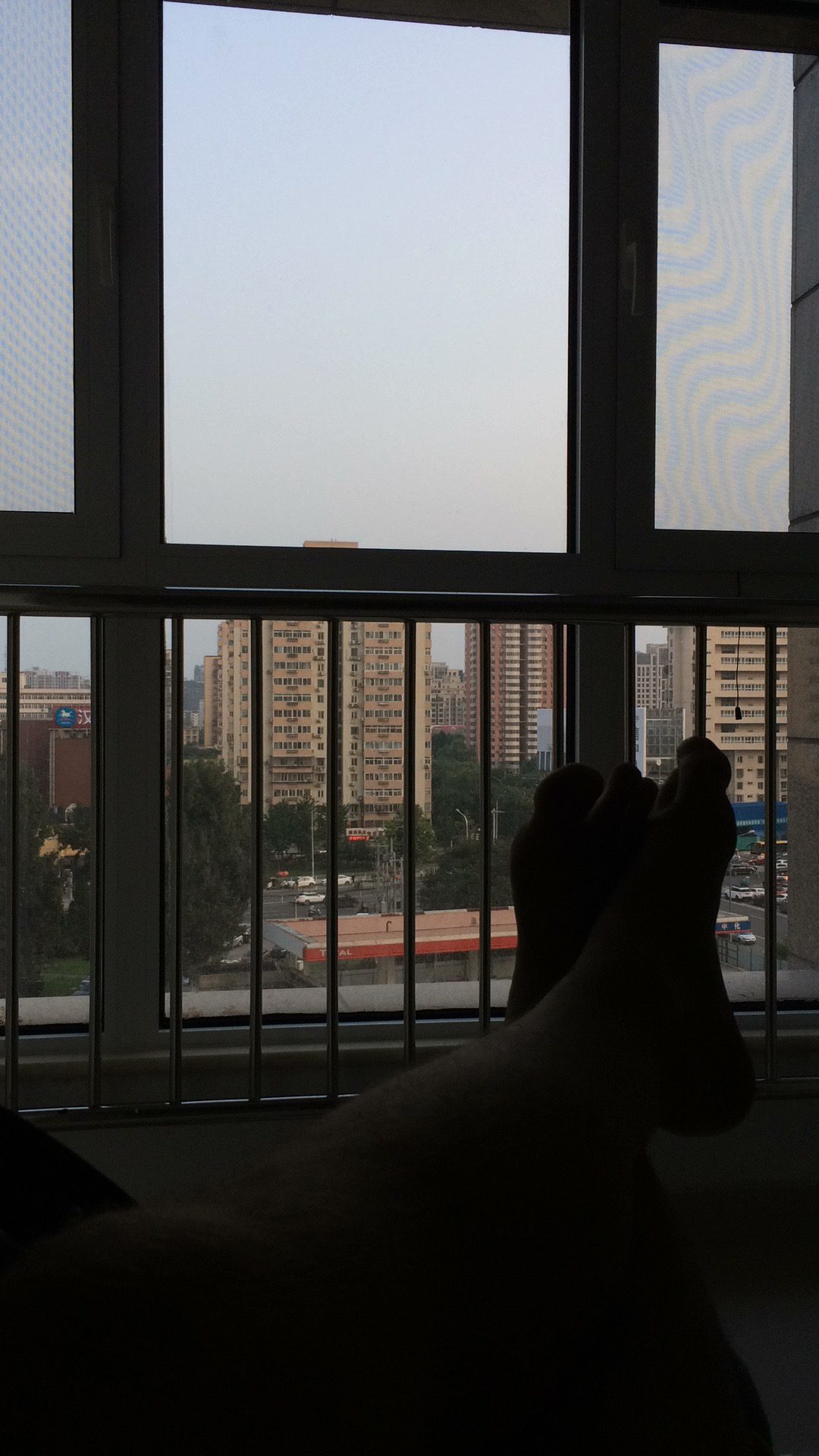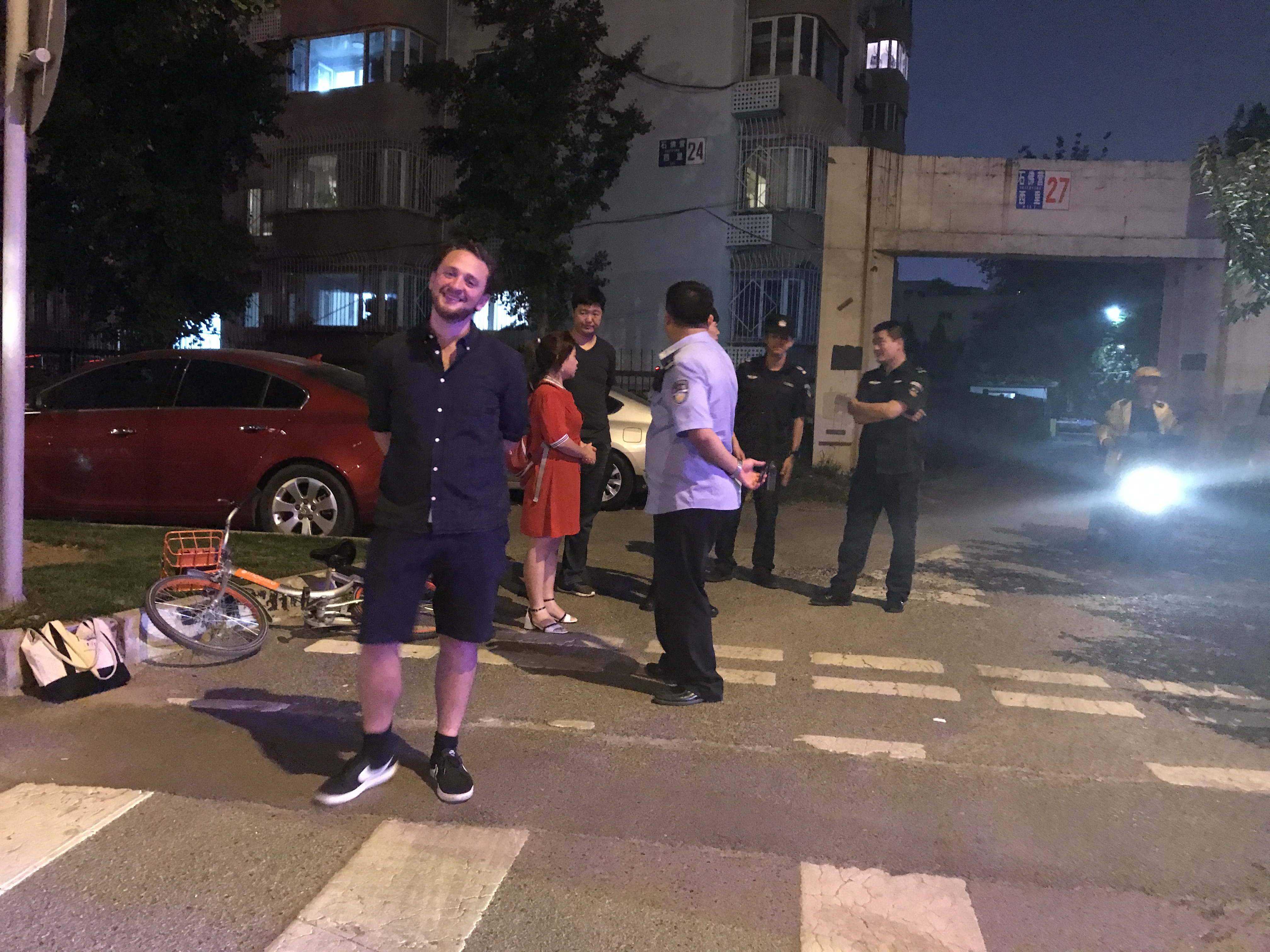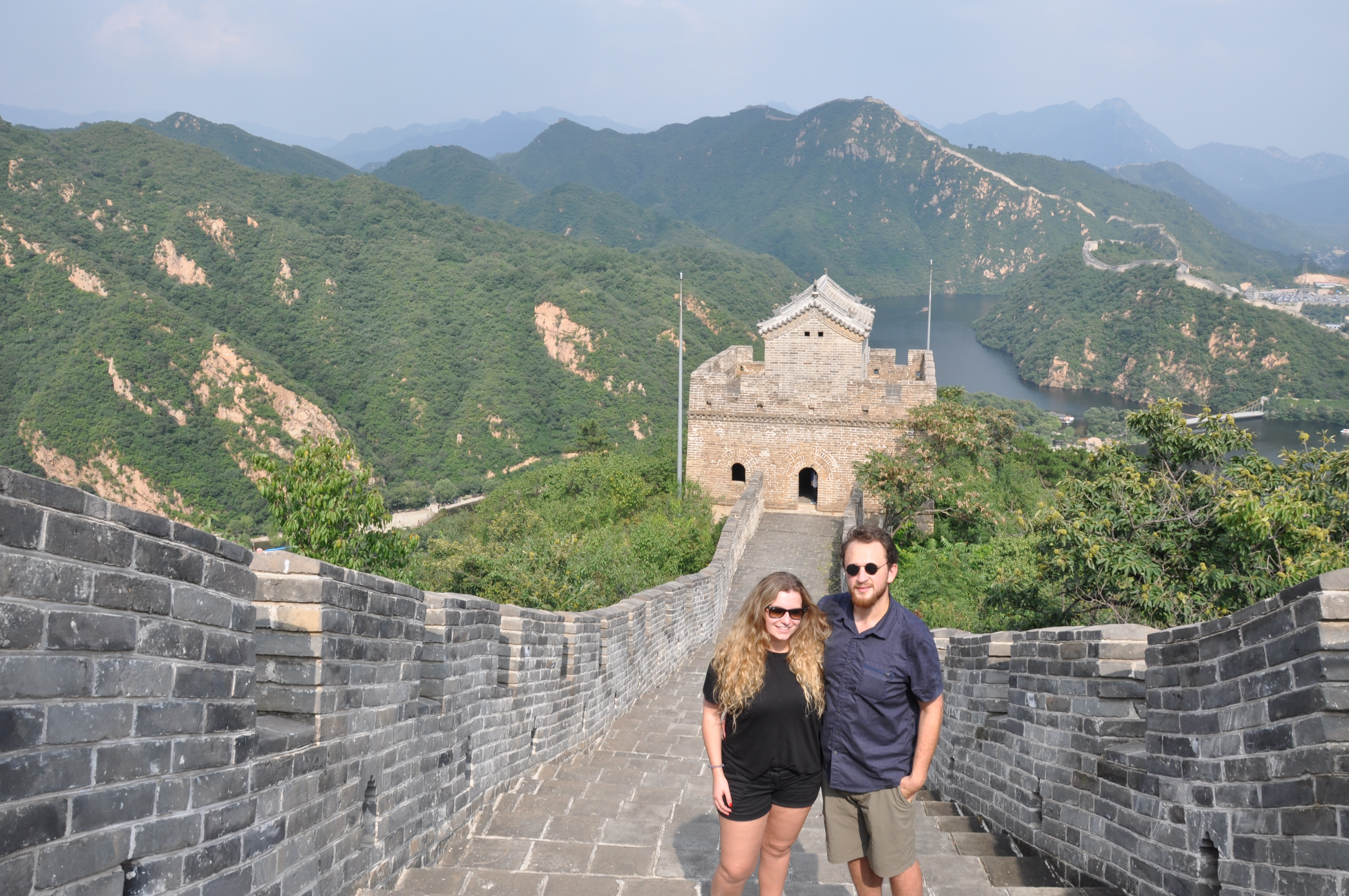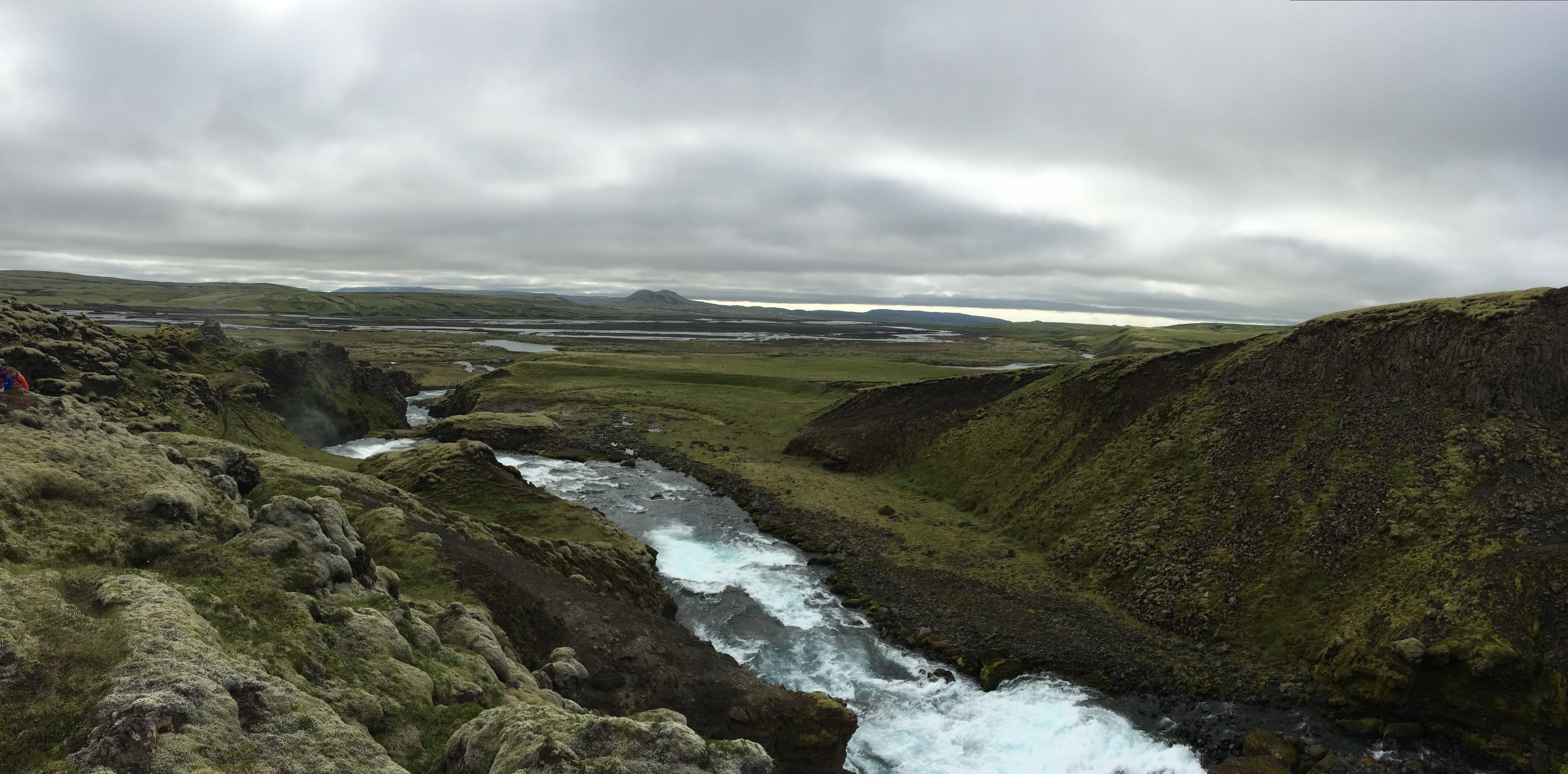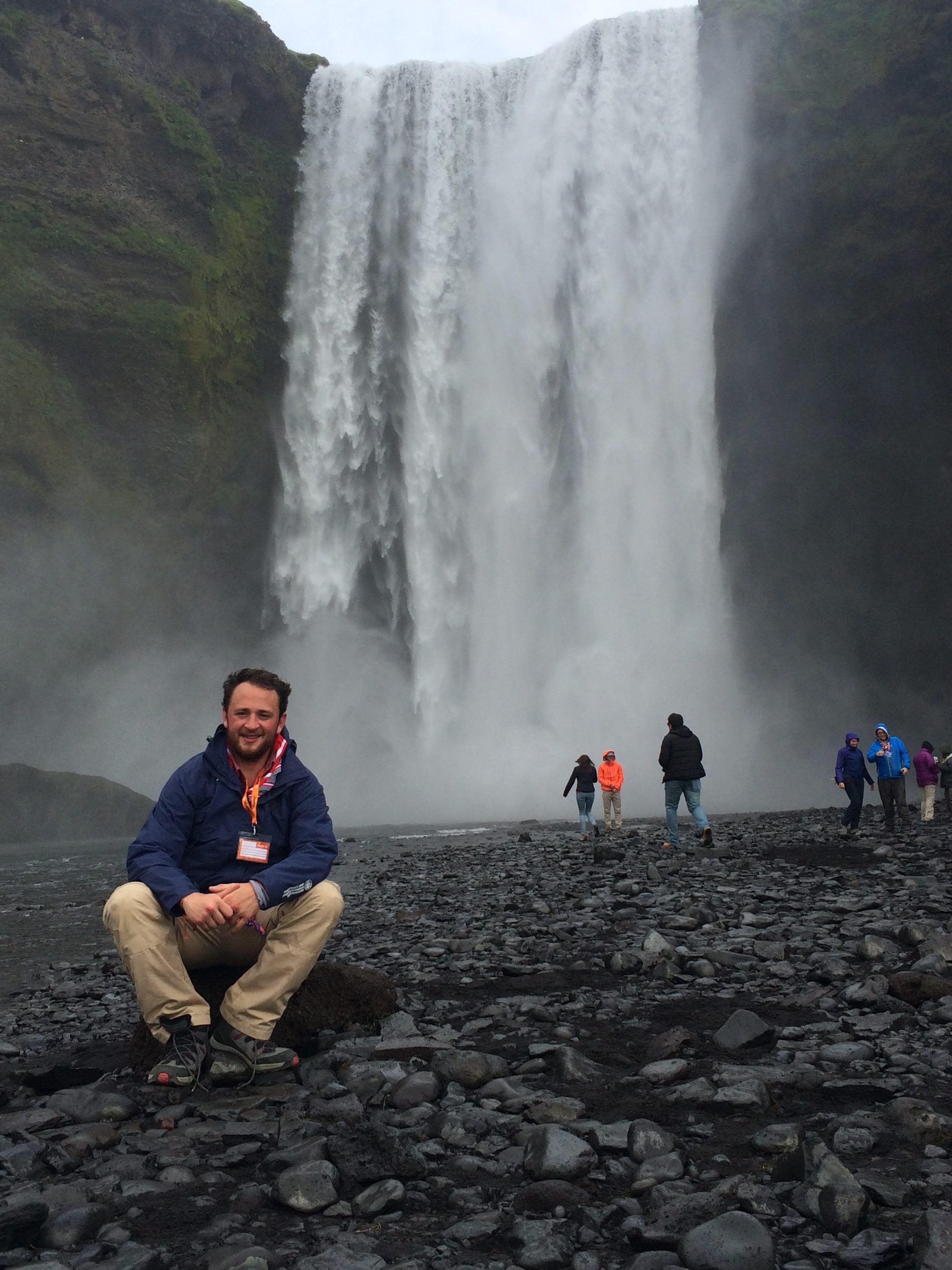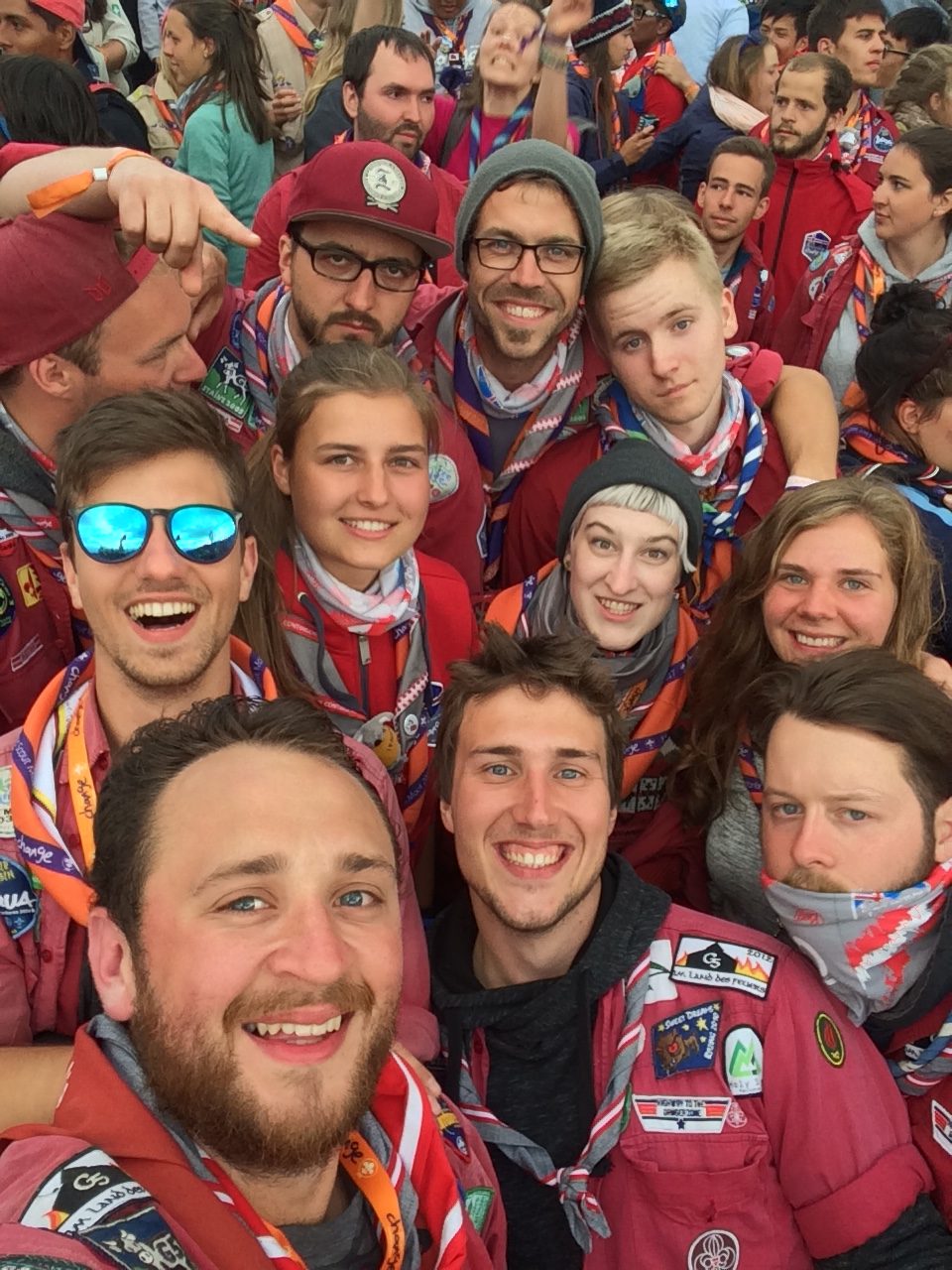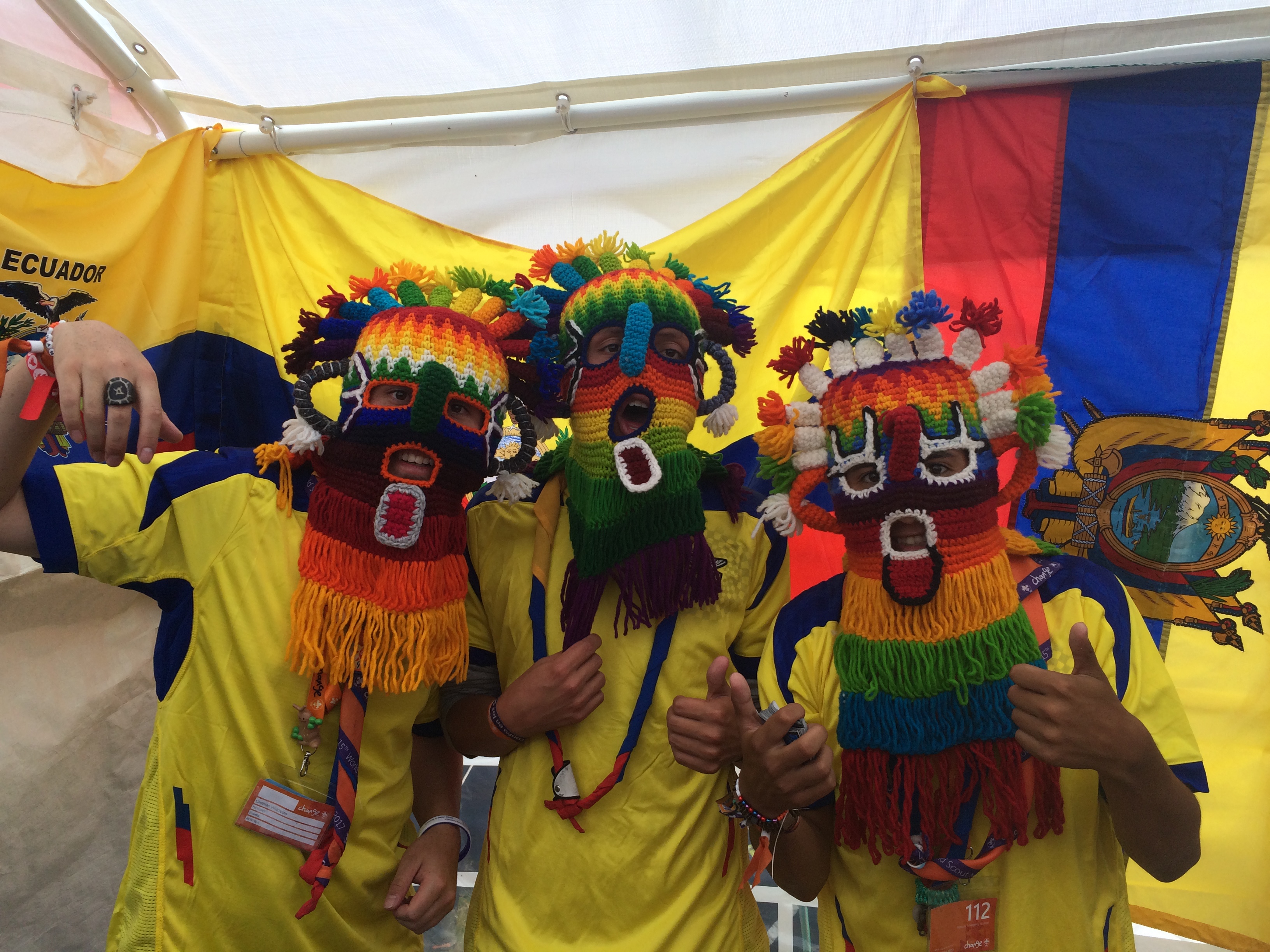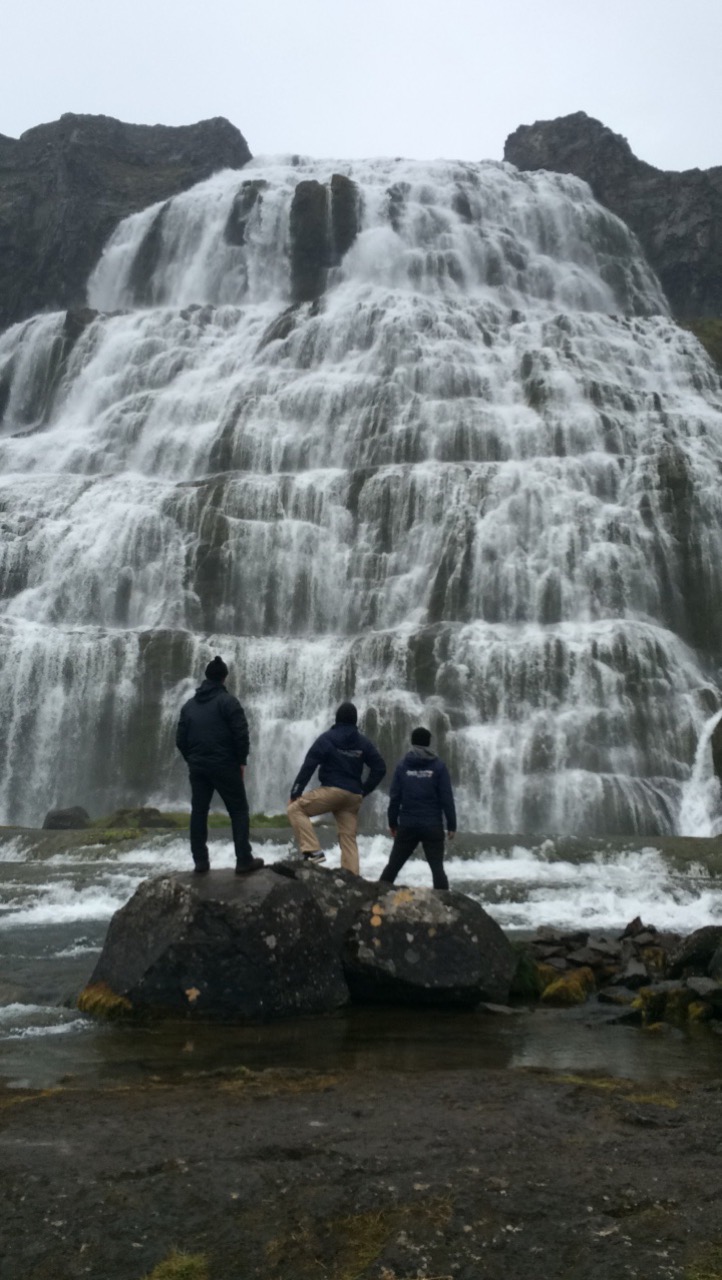Die deutsche Ausgabe dieses Beitrages findet ihr hier!
As announced on my last blog, this time is going to be about our trip for so-called Golden Week. Overall there are three national holidays in China: spring festival, also called Chinese New Year in January/February, labor week -which nowadays is only one single labor day on 1st of May and the week of China’s national day, which practically enough is also at the same time as the Moon Festival. Traditionally, Moon Festival is a family holiday. Many people travel to reunite with their families somewhere in the country and everybody gets together and has a feast and enjoys the time together. People give each other moon cakes, which come with different fillings and actually nobody ever seems to eat. I couldn’t resist and had 5, I believe.
[ngg_images source=“galleries“ container_ids=“3″ display_type=“photocrati-nextgen_basic_thumbnails“ override_thumbnail_settings=“0″ thumbnail_width=“240″ thumbnail_height=“160″ thumbnail_crop=“1″ images_per_page=“20″ number_of_columns=“0″ ajax_pagination=“0″ show_all_in_lightbox=“0″ use_imagebrowser_effect=“0″ show_slideshow_link=“1″ slideshow_link_text=“typical moon cake“ order_by=“sortorder“ order_direction=“ASC“ returns=“included“ maximum_entity_count=“500″]
Especially people in Beijing use this opportunity to catch some fresh air and visit their families. According to an article I stumbled upon on WeChat, more than 700 Mio. (in words that is seven hundred million!!!) trips were booked over Golden Week in China. That is an incredible, yet very possible number because everybody seems to be on the move for the time.
Since Golden Week is Kasias only holiday until the end of the semester we also decided to make a move. Unfortunately she is also only holding a 1-entrance visa and can only go abroad with that once, which is we we were looking for an alternative in China. A lovely colleague of mine recommended me the travelagency FCN, which organzies bus trips from Beijing to many parts of China. In Golden Week they had offered a 7-day roundtrip along the ancient Silk Road all the way to Western China. Since Kasia is also writing her Master’s thesis about the Silk Road we decided to book this trip.
FCN is an abbreviation for Foreigner China Network and our trip leader Sabrina mentioned that it is not a travel agency but more a Social Netowrk. And the whole trip really felt like that. The tour was organised for the first time in that form and Sabrina called it “a mission impossible” and at times it wasn’t perfectly organized. On the other hand the fellow travelers on the trip were a colorful bunch from 18 different countries (AUS, AUT, POL, CH, GER, DEN, USA, CHN, FRA, THA, KOR, PAK, IDN, CRO,JPN, SAU, RUS and UK represent) and everybody was between the age of 18 and 35. This specific mixture of people made it a really cool and enjoyable trip!
[ngg_images source=“galleries“ container_ids=“4″ display_type=“photocrati-nextgen_basic_thumbnails“ override_thumbnail_settings=“0″ thumbnail_width=“240″ thumbnail_height=“160″ thumbnail_crop=“1″ images_per_page=“20″ number_of_columns=“0″ ajax_pagination=“0″ show_all_in_lightbox=“0″ use_imagebrowser_effect=“0″ show_slideshow_link=“0″ slideshow_link_text=“[Zeige eine Slideshow]“ order_by=“sortorder“ order_direction=“ASC“ returns=“included“ maximum_entity_count=“500″]
The first leg of the trip was also the longest and most strenuous one. The 19 hours that were estimated online made us consider flying to our first stop called Xining directly but for financial reasons and more importantly because there were no trains or flights actually available anymore, we had to take the bus anyways. Unfotunately, it was not a comfy sleeper but a very ordinary coach bus that felt like it had less leg room than a ryanair flight or a Polskibus (not sure if anybody can actually relate to the latter). What was even more unfortunate was the lack of an on-board toilet. With 50 people and 50% female bladders (I’m teribly sorry ladies, but you do have the smaller ones…) we soon realized that 19 hours are not going to do the trick. After a short introduction game, where everybody had the chance to explain how to say “How are you?” in their own language and the first pee- and snack break most people tried to pass the time on the bus by taking a nap. That was until the lights turned on at 2:00 effing AM. First our Chinese travel guide (roughly 25 years old and a pretty impatient fella): No clue what he said! Then Sabrina, Chinese as well but relatively good English: We are taking a 3-hour break at this gas station! Leaving at 5:00am sharp. Since there were two drivers on our bus, there were quite a few confused looks at first but soon we learned that by law there are no coaches allowed to drive on Chinese roads between 2:00 and 5:00am. Since there were approximately 10 other coaches at the gas station with us we had a spontaneous midnight Instant noodle party with 200 other hungry Chinese people. When the stomach is rumbling, the stomach is rumbling. Chinese are not going to win a medal in cleaning a way trash BTW. Shortly before 5:00 the gas station looked like this:
[ngg_images source=“galleries“ container_ids=“19″ display_type=“photocrati-nextgen_basic_thumbnails“ override_thumbnail_settings=“0″ thumbnail_width=“240″ thumbnail_height=“160″ thumbnail_crop=“1″ images_per_page=“20″ number_of_columns=“0″ ajax_pagination=“0″ show_all_in_lightbox=“0″ use_imagebrowser_effect=“0″ show_slideshow_link=“0″ slideshow_link_text=“[Zeige eine Slideshow]“ order_by=“sortorder“ order_direction=“ASC“ returns=“included“ maximum_entity_count=“500″]
After countless games of Uno, a lot of sleep, some shy small talk with our travel buddies, way to many pee breaks (which are an adventure on their own: catchword hole in the ground) and a traffic jam due to an accident we finally arrived 30 hours later in Xining. Checking in at the -admittedly very nice – hotel and straight back to bed. Xining is the capital of Qinghai province and is situated in the Northeast of the Tibetian Plateau.
[ngg_images source=“galleries“ container_ids=“18″ display_type=“photocrati-nextgen_basic_thumbnails“ override_thumbnail_settings=“0″ thumbnail_width=“240″ thumbnail_height=“160″ thumbnail_crop=“1″ images_per_page=“20″ number_of_columns=“0″ ajax_pagination=“0″ show_all_in_lightbox=“0″ use_imagebrowser_effect=“0″ show_slideshow_link=“0″ slideshow_link_text=“[Zeige eine Slideshow]“ order_by=“sortorder“ order_direction=“ASC“ returns=“included“ maximum_entity_count=“500″]
Not very far away lied the first attraction of the next day: Qinghai Lake is on of the largest salt lakes on our planet and lies 3200m above sea level (that’s about 9600 feet for my American friends). On our 1.5 hour way to the lake we were already able to see herds of goats and yaks. I made it my personal goal for the day to take a picture with a Yak. Thanks to a lovely highschool colleague of mine, who most likely does not read this blog anyways, I had the awesome nickname “yak with a tampon” in the first few years of high school. I realized English speakers are not going to get this joke but we call a tampon „OB“ in German
So while the majority of our group played tag on the lakeside (Sabrina constantly tried to motivate us by starting “fun” little games), Kasia and I darted off to get some yaks in front of the lens. A mere 5 minutes later I found the first, really mangy looking yak and snapped a few pics. Apparently we were talking so loudly about the smell of the bovine that we attracted the attention of the family who lived in the tent behind it. I was about to take off when Kasia, with her amazing Chinese language skills, figured out that they were inviting us to try some Yak in their hut. Of course we couldn’t decline that offer and followed the mother and her 5 children into the warm and cosy hut. The family seemingly didn’t only live there they also ran a “little” restaurant. Yak intestines, thast everybody was already chewing on, were already sitting on the table and after having a look at the illustrated menu we decided to only have some “tea”. The big portion of Yak meat would have been way too much for me and a little bit too exotic for Kasias taste. Two minutes later there were two cups of a soup-looking liquid. Tea in the Tibetian Plateau apparently means watered down Yak milk (really fatty and nutritious) with an unknown, vanilla-looking spice in it – my verdict: surprisingly delicious! After a little bit of “small talk” in Chinese I was even offered to chew on some intestines. My verdict: unsurprisingly disgusting. It tasted a little bit like the Yak outside smelled. I can imagine that not many white people make it to this corner of China and most certainly not into this specific tent. After our travel buddies Jessi (AUS), Nicolina (DEN) and Emily (USA) entered the flat, the whole family was more than stoked.
[ngg_images source=“galleries“ container_ids=“5″ exclusions=“17″ sortorder=“11,6,14,7,8,9,15,16,10,13,17,18,12,19″ display_type=“photocrati-nextgen_basic_imagebrowser“ ajax_pagination=“1″ order_by=“sortorder“ order_direction=“ASC“ returns=“included“ maximum_entity_count=“500″]
Not only on the second day of the trip Kasia and her blonde, voluminous curls were a popular object of photos. The whole trip we continuously had to stop and take pictures with Chinese tourists. Also my bronze magnificence of a beard was the center of attention from time to time. Our second attraction of the day was the nearby Chaka (or Caka) salt lake and was extremely crowded with tourists. Salt has been mined for over 3000 years at this lake and according to a legend it was Yan Emperor, who along with the yellow Emperor is one of the ancestors of the Chinese nation. With a green snake in his left and a red dragon in his right hand he carried the salt across the land. After a little bit of posing and walking along the windy lake we were off to our next hotel for the night in Delingha City.
[ngg_images source=“galleries“ container_ids=“7″ exclusions=“49,48,53″ sortorder=“40,41,42,43,44,45,46,47,49,50,51,52,48,53″ display_type=“photocrati-nextgen_basic_imagebrowser“ ajax_pagination=“1″ order_by=“sortorder“ order_direction=“ASC“ returns=“included“ maximum_entity_count=“500″]
We finished the night with a delicious hot pot dinner. Very popular all over China, hot pots in the middle of nowhere are of course much cheaper than in Beijing. For roughly 7€ one could choose endless ingredients to put in your personal hotpot (spicy or regular, depending on preference – Kasia had to experience that spicy really means spicy in the hard way) and if that wasn’t enough it included free-flowing drinks. Ingredients included pretty much everything: noodles, all sorts of mushrooms, tofu and even seafood and lamb or pork. I almost felt bad after consuming ridiculous amounts of food for barely any money.
[ngg_images source=“galleries“ container_ids=“7″ exclusions=“40,41,42,43,44,45,46,47,49,50,51,52″ display_type=“photocrati-nextgen_basic_thumbnails“ override_thumbnail_settings=“0″ thumbnail_width=“240″ thumbnail_height=“160″ thumbnail_crop=“1″ images_per_page=“20″ number_of_columns=“0″ ajax_pagination=“0″ show_all_in_lightbox=“0″ use_imagebrowser_effect=“0″ show_slideshow_link=“0″ slideshow_link_text=“[Zeige eine Slideshow]“ order_by=“sortorder“ order_direction=“ASC“ returns=“included“ maximum_entity_count=“500″]
Day “2” (actually for if you count the 1.5 days of travel) was one of the less well organized parts of the trip. According to the schedule onlie we were meant to travel 7 hours to Gansu province to the famous Mingsha Shan Park (which translates to “echoing sands”) in the desert. After a early wake up and a 6:30 breakfast buffet (slightly different to a classic European breakfast buffet) and a small delay it took us 10 hours through the desert and we just made it in time to miss the sunset. This created some disappointment with some travelers and made the tiny coach even more uncomfortable. Of course we had to share this attraction again with thousands of Chinese tourists and went on to explore the Crescent Moon spring. A natural moon-shaped oasis that even lights up in all sorts of different colours at night. Very cool to watch for tourists and even better opportunites to take pictures from the surrounding dunes.
[ngg_images source=“galleries“ container_ids=“8″ sortorder=“56,54,55,57,58,59,60,61,62″ display_type=“photocrati-nextgen_basic_imagebrowser“ ajax_pagination=“1″ order_by=“sortorder“ order_direction=“ASC“ returns=“included“ maximum_entity_count=“500″]
The second evening we spent at the night market in Dunhuang City. Accompanied by – bitch, you guessed it – thousands of Chinese we devoured some lamb, chicken and donkey on a skewer. The donkey was expectedly tough, yet surprisingly juicy and – like almost everything in China – very well spiced. Kasia had even brought a bottle of Polish hazelnut vodka and in combination with 3L beer trophies we had a fun night out in Dunhuang.
[ngg_images source=“galleries“ container_ids=“9″ sortorder=“67,63,64,65,66,68,69,70″ display_type=“photocrati-nextgen_basic_imagebrowser“ ajax_pagination=“1″ order_by=“sortorder“ order_direction=“ASC“ returns=“included“ maximum_entity_count=“500″]
The sights of the third day were especially interesting from a historical standpoint. The destination were the famous Mogao grottoes. Over a hundred (partially destroyed) temple caves that monks carved into the rock over 1000 years ago. Today one can only visit a few of these caves since they are also world cultural heritage. Especially the 7 store pagoda and the 30m buddha inside the cave were extremely impressive. After the liquid adventures from the night before I was even more excited about the lamb kebabs and the western toilet seats. No comment.
[ngg_images source=“galleries“ container_ids=“10″ display_type=“photocrati-nextgen_basic_imagebrowser“ ajax_pagination=“1″ order_by=“sortorder“ order_direction=“ASC“ returns=“included“ maximum_entity_count=“500″]
The second pit stop of the day wasn’t any less interesting: Jiayuguan passage is the western end of the Great Wall and a huge trapeze-shaped fortification. Of course we shared this attraction with a million Chinese tourists, for whom a visit to the Great Wall is something very special. Supposedly one is not a real man if he hasn’t climbed the Great Wall at least once in his lifetime. Many great generals defended this fortification and even today you can still find actors that mime Chinese soldiers and pretend like it is 900 years ago or even a Mongol slayer jr.
[ngg_images source=“galleries“ container_ids=“11″ display_type=“photocrati-nextgen_basic_imagebrowser“ ajax_pagination=“1″ order_by=“sortorder“ order_direction=“ASC“ returns=“included“ maximum_entity_count=“500″]
Outside the fortress the market street was a lot of fun. The haggling and bargaining that is going on there is very fun to watch and partake in. There are similar markets at almost all of the tourist attractions along the Silk Road. With very little money you can get delicous Chuan (meat skewers), Jianbing (pancakish, savory flat bread) or cut up yellow melons.
[ngg_images source=“galleries“ container_ids=“12″ display_type=“photocrati-nextgen_basic_thumbnails“ override_thumbnail_settings=“0″ thumbnail_width=“240″ thumbnail_height=“160″ thumbnail_crop=“1″ images_per_page=“20″ number_of_columns=“0″ ajax_pagination=“0″ show_all_in_lightbox=“0″ use_imagebrowser_effect=“0″ show_slideshow_link=“0″ slideshow_link_text=“[Zeige eine Slideshow]“ order_by=“sortorder“ order_direction=“ASC“ returns=“included“ maximum_entity_count=“500″]
The next should be one of the highlights of our tour: the magnificent rainbow mountains at Danxia-Zhangye National park. Different geological circumstances created several colorful layers of sediment that now make for a very scenic natural attraction. Thousands of years ago there were still lakes and rivers flowing through these lands. Algae started growing on the rocks and gave them a greenish colour between the red sediment. For somebody who is red-and-green blind this sight is only semi-exciting. To be honest, I was not very impressed. With 100% eye-sight it would have probably been very cool to see. But even then reality doesn’t even get close to the pictures online since the colors are most intense just after it rains and when the sun sets/rises.
One fun anecdote from our visit to the park: There are security guards EVERYWHERE that ensures nobody leaves the tracks and staircases. As soon as somebody even just steps of them to pose for a picture, you hear yelling from all sides, rape whistles blowing and even bullhorns on “police mode”. When our small travel group of the day (around 10 people) stepped onto the street instead of using the sidewalk one security guard came running, rape whistle in his mouth and just to be sure with a rubber club in his hand (!!!). Chinese don’t mess around when it comes to their national parks!
[ngg_images source=“galleries“ container_ids=“13″ exclusions=“98″ display_type=“photocrati-nextgen_basic_imagebrowser“ ajax_pagination=“1″ order_by=“sortorder“ order_direction=“ASC“ returns=“included“ maximum_entity_count=“500″]
The last two nights we spend in Ejina, in inner Mongolia (so basically at the Chinese-Mongolian border) at the foothills of the second-largest desert in the world: the Gobi desert. Apparently there was no more budget for hotel rooms here in Ejina so we ended up staying in a building that looked like barracks on field beds where usually groups of children have a rest. For dinner we found a Mongolian Yurt restaurant about 50m down the road. There’s space for roughly 20 people in one of these Yurt tents. You gather round one big circular table and thanks to a lazy susan it is very easy to share all the dishes that are being ordered. Among other things we ordered camel and mutton, morels with egg, graded potatoes and tofu in black sauce. The camel was surprisingly good as well. Of course very fatty but quite tender. Something that you can’t really do in the West as either: buy drinks at the market (which belongs to the same family to be fair) and then bring them to the restaurant to save a good 1.5€ on each drink. Maybe we should try this system back home as well.
[ngg_images source=“galleries“ container_ids=“14″ sortorder=“106,107,109,108,110,111″ display_type=“photocrati-nextgen_basic_imagebrowser“ ajax_pagination=“1″ order_by=“sortorder“ order_direction=“ASC“ returns=“included“ maximum_entity_count=“500″]
On the last day of being a tourist we had two more parks on our schedule. The first one was the humongous 30.000 hectare Populus euphratica park. A very popular destination for tourists, especially because of the huge natural colony of euphratica poplars that covers most parts of the park. There is a shuttle bus taking you to 8 different stations to explore this bus. Of course there are plenty of opportunities to have snacks or buy souvenirs at any of these bus stations.
[ngg_images source=“galleries“ container_ids=“6″ exclusions=“21,27,28,29,30,31,32,33,34,35,36,37,38,39″ display_type=“photocrati-nextgen_basic_imagebrowser“ ajax_pagination=“1″ order_by=“sortorder“ order_direction=“ASC“ returns=“included“ maximum_entity_count=“500″]
When we found some traditional Mongolian clothing for rent we just had to take the opportunity to have a photo shooting:
[ngg_images source=“galleries“ container_ids=“6″ exclusions=“20,21,22,23,24,25,26,34,35,36,37,38,39″ display_type=“photocrati-nextgen_basic_imagebrowser“ ajax_pagination=“1″ order_by=“sortorder“ order_direction=“ASC“ returns=“included“ maximum_entity_count=“500″]
If you get to the last out of the 8 stops, you find yourself in the “desert kingdom” in the middle of the desert. We used this awesome opportunity for a joyride through the desert on some ATVs. A lot of fun and well worth the money for 20 bucks.
[ngg_images source=“galleries“ container_ids=“6″ exclusions=“20,22,23,24,25,26,27,28,29,30,31,32,33″ display_type=“photocrati-nextgen_basic_imagebrowser“ ajax_pagination=“1″ order_by=“sortorder“ order_direction=“ASC“ returns=“included“ maximum_entity_count=“500″]
The second destination of theday was the black city of Heicheng. It was built in the 11th century and at the time was one of the most important trade cities along the Silk road until it was destroyed by the Mongols in the 14th century. All that is left are ruins in the desert and a few turret towers. The same park also includes a “weirwood forest”. A graveyard for tons of euhpratice popels, that have died over a 1000 years ago and have a very ghastly shape nowadays. During a normal week it might have been quite scary to walk through the park at dawn but unfortunately we had to make our way through the crowds of people. Or they made their way with us. Anyways…
[ngg_images source=“galleries“ container_ids=“15″ sortorder=“113,114,112,115,116,117,118,119″ display_type=“photocrati-nextgen_basic_imagebrowser“ ajax_pagination=“1″ order_by=“sortorder“ order_direction=“ASC“ returns=“included“ maximum_entity_count=“500″]
Before we made our way back to Beijing in “only” 22h, we paid 10€ entrance fee to see a sunrise at a lake. Not exactly something, that I would do in Austria.
[ngg_images source=“galleries“ container_ids=“16″ exclusions=“120,121″ sortorder=“120,121,122,123,125,124″ display_type=“photocrati-nextgen_basic_imagebrowser“ ajax_pagination=“1″ order_by=“sortorder“ order_direction=“ASC“ returns=“included“ maximum_entity_count=“500″]
The way back was not as troublesome and passed much faster than the way there. Well.. almost without trouble if you ignore the fact that I was never so close to literally shitting my pants (besides a little accident as a caroler when I was like 7 years old) and having to stop the whole bus so I could have an emergency break. There’s more pleasant things. The whole travel party had gotten very close over the past 6 days and I believe it is fair to say that some bridges and friendships were built and we have already met up several times in Beijing over the last couple of weeks. So we tried to make the time fly be with several games of “Heads Up”, an open Mic contest – hosted by our own MC from Indonesia, MC Willis – and several stories and anecdotes from previous travels and other adventures.
[ngg_images source=“galleries“ container_ids=“16″ exclusions=“120,122,123,124,125″ display_type=“photocrati-nextgen_basic_thumbnails“ override_thumbnail_settings=“0″ thumbnail_width=“240″ thumbnail_height=“160″ thumbnail_crop=“1″ images_per_page=“20″ number_of_columns=“0″ ajax_pagination=“0″ show_all_in_lightbox=“0″ use_imagebrowser_effect=“0″ show_slideshow_link=“0″ slideshow_link_text=“[Zeige eine Slideshow]“ order_by=“sortorder“ order_direction=“ASC“ returns=“included“ maximum_entity_count=“500″]
The whole trip probably wasn’t the most relaxing one – the times we had to get up early and were sightseeing all day were too many. Over 90 hours and 6000 miles on the road. Still – no regrets whatsoever. It was amazing to explore this part of China. The contrast between a mega city like Beijing and the more rural areas is incredible and I am already looking forward to the next adventure!
[ngg_images source=“galleries“ container_ids=“16″ exclusions=“121,122,123,124,125″ display_type=“photocrati-nextgen_basic_thumbnails“ override_thumbnail_settings=“0″ thumbnail_width=“240″ thumbnail_height=“160″ thumbnail_crop=“1″ images_per_page=“20″ number_of_columns=“0″ ajax_pagination=“0″ show_all_in_lightbox=“0″ use_imagebrowser_effect=“0″ show_slideshow_link=“0″ slideshow_link_text=“[Zeige eine Slideshow]“ order_by=“sortorder“ order_direction=“ASC“ returns=“included“ maximum_entity_count=“500″]
One more little extra special: The prejudice that Chinese tourists take pictures of everything and everybody is not only true for Europe. Even in China tourists like posing and taking pictures of and with everything and everywhere. Especially red seems to be a very popular color. But look for yourself:
[ngg_images source=“galleries“ container_ids=“17″ display_type=“photocrati-nextgen_basic_imagebrowser“ ajax_pagination=“1″ order_by=“sortorder“ order_direction=“ASC“ returns=“included“ maximum_entity_count=“500″]
And last but not least: the comment section! 😀 My dear, former colleague Iris was asking last time how expensive life in China is in general. This question is actually not that easy to answer. I guess it very much depends on where and how you live. Beijing is obviously the most expensive area to live in but even within city borders the prices for flats fluctuate a lot. Of course the more central you live, the more expensive it gets. Outside the 5th ringroad you probably pay less than 700€ for a 2-bed room flat, in the center it can be up to 2000€. This is of course “western style” flats, for Chinese citizens the prices might be very different. However other amenities like public transport, taxis, phone contracts are generally much cheaper than in Europe. For my 8GB and 1000 free credits I pay around 7€ a month. You can get a 20-minute cab ride for around 4€ and a ride on the metro through the whole city is around 80 cents. With groceries and produce it depends a lot on personal preference. Obviously, the more western products you buy, the more expensive it gets. Milk for example is generally not one of the staple foods, since most Chinese are lactose intolerant and therefore a litre is around 2€. On the other hand, products like mushrooms are ridiculously cheap for 30 cents / 500g. The same goes for ordering out or going to the restaurant. The choice ranges from 50 cent for delicious noodle soup up to 10€ for Italian pasta.
In general I would say, that one can easily live a very cheap life in China, assuming that one is willing to change their lifestyle according to Chinese stanards. I hope that anwers your question, dear Iris!
Soooo, this one has been a long one! Cheers if you are still with me! The next one is going to be shorter again. I hope all the VPNs and the internet are still going to work because last week the national congress of the communist party startet and pretty much screws with everybody’s life here in Beijing! But it looks like everything should be fine!
So far, all the best, kisses on the belly, your friendly neighborhood bear! <3









